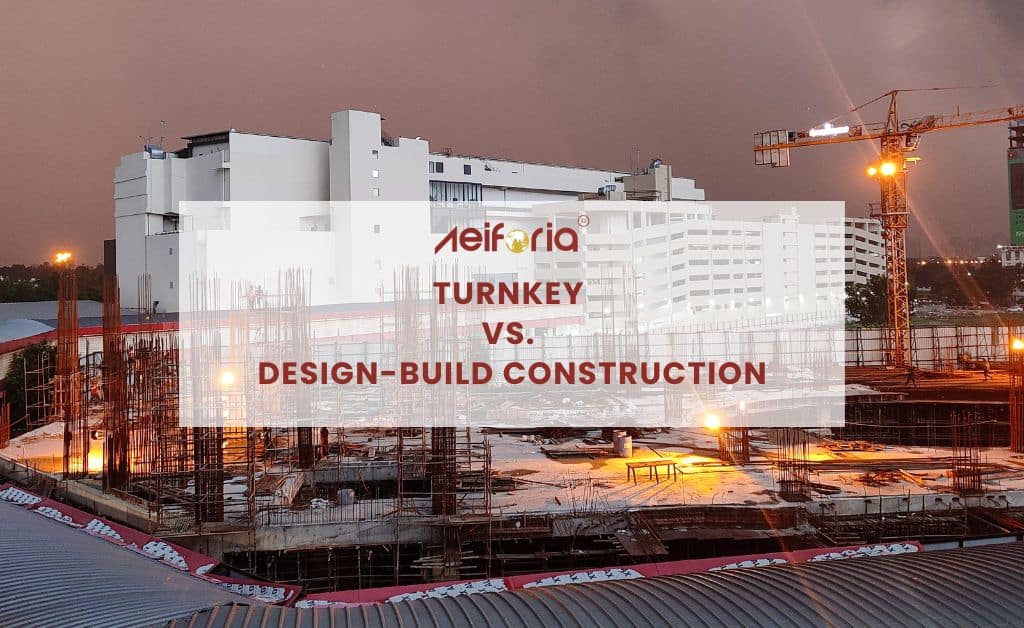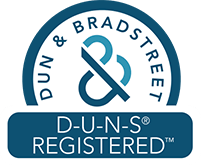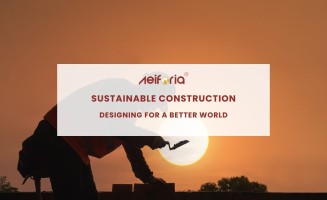
Turnkey vs. Design-Build Construction
Regarding construction, builders take different approaches to executing a project. Two standard methods are turnkey and design-build construction. While they may seem similar, critical differences between the two can impact the outcome of a construction project. This article will explore what turnkey and design-build construction means and their differences.
Design-Build Construction
A single entity or company is in charge of the design and the building of a project using the design-build process. The owner only needs to deal with one point of contact throughout the construction process. The design-build contractor hires architects, engineers, and subcontractors and coordinates their work to ensure the project is completed on time and within budget.
The design-build contractor takes the owner's vision and turns it into a reality. They work with the owner to develop the design and provide cost estimates, timelines, and construction plans. Once the design is finalized, the contractor begins construction, using their team of professionals to bring the project to life.
Turnkey Construction Services
Apart from design-build, Turnkey construction is a method where the construction company or contractor takes full responsibility for a project from start to finish. This includes everything from design to construction to handing the keys to the owner. The term "turnkey" refers to the fact that the owner can turn the key and start using the completed project.
In turnkey construction, the owner doesn't have to worry about any aspect of the construction process. The turnkey construction company is responsible for every detail, including design, permits, material procurement, and construction. The owner only needs to provide the project's funds and vision.
The Differences Between Turnkey and Design-Build Construction
While turnkey and design-build construction methods involve a single point of contact, some significant differences exist.
- Responsibility: In turnkey construction, the builder takes complete responsibility for the project, including design and construction. However, the owner still has some responsibility for the project.
- Control: In turnkey construction, the owner hands over all control to the builder. In design-build construction, the owner has more control over the project, as they work closely with the contractor throughout the construction process.
- Timeline: Turnkey construction projects tend to have a faster timeline. The builder is responsible for everything and can work more efficiently. Design-build construction projects may take longer as there are more moving parts to coordinate.
- Cost: Turnkey construction projects can be more expensive as the builder takes on more risk and responsibility. In design-build construction, the owner has more control over the budget and can work with the contractor to find cost-effective solutions.
Advantages of Turnkey Construction
Turnkey construction is a project delivery method where a single entity, the contractor, takes full responsibility for the project's design, construction, and commissioning. Here are some of the advantages of turnkey construction:
Faster project completion
Turnkey construction is known for its speed. Since the contractor is responsible for the entire project, they can complete it faster than other construction methods. The contractor has a team of experts, including designers, engineers, and construction workers, who work together to ensure the project is completed on time.
Lower risk for clients
With turnkey construction, clients have a lower risk because they only deal with one contractor throughout the project. The contractor is responsible for everything, including design, procurement, and construction, so clients don't have to worry about coordinating with multiple parties. If anything goes wrong, the contractor is liable, and clients can seek legal action against them.
Single point of contact
Turnkey construction provides clients with a single point of contact throughout the project. Clients can communicate directly with the contractor, who will coordinate everything with the team. This streamlined approach can reduce stress and save clients time and effort.
Reduced stress and hassle
Since the contractor is responsible for everything, clients don't have to worry about managing the project or coordinating with different parties. This can reduce stress and hassle for clients, allowing them to pay attention to other vital aspects.
Cost savings
Turnkey construction can be cost-effective for clients because the contractor can leverage their experience and expertise to optimize the project's cost. The contractor can procure materials and labor at a lower price, and they can also manage the task efficiently to avoid unnecessary expenses.
Advantages of Design and Build Construction
Design and build construction is a project delivery method where the contractor is responsible for design and construction. Here are some of the advantages of design and build construction:
Collaborative approach
Design and build construction is a collaborative approach that involves close coordination between the contractor and the client. The contractor works closely with the client to understand their needs and preferences, and they incorporate those into the design. This collaborative approach can lead to better outcomes and greater client satisfaction.
Greater flexibility
Design and build construction allows for greater flexibility because the contractor can change the design during construction. This can benefit clients who may change their minds during the project. The contractor can make adjustments without affecting the project's completion time.
Increased innovation and creativity
Design and build construction allows for more significant innovation and creativity because the contractor has complete control over the design. The contractor can leverage their experience and expertise to develop innovative solutions that meet the client's needs.
Budget control
Design and build construction allows for better budget control because the contractor is responsible for both design and construction. The contractor can optimize the design to fit the client's budget, and they can also manage the project efficiently to avoid cost overruns.
Better quality control
Design and build construction allows for better quality control because the contractor is responsible for both design and construction. The contractor can ensure that the design meets the client's requirements, and they can also ensure that the building meets the design's specifications.
Which is Better: Turnkey or Design-Build Construction?
There is no one-size-fits-all answer to which construction method is better. Finally, the decision is based on the owner's particular requirements and preferences and the nature of the project itself.
For owners who want to be completely hands-off and leave all decision-making to the builder, turnkey construction may be the better choice. However, the owner wants to be more involved in the process and have more control over the project. Design-build construction may be a better fit.
Conclusion
In summary, turnkey and design-build construction are two standard methods used in the construction industry. While they may seem similar, critical differences between the two can impact the outcome of a construction project. Owners should carefully consider their projects' specific needs and preferences when deciding between turnkey and design-build construction.
FAQs
Can turnkey and design and build construction be used for any project?
Yes, turnkey and design and build construction can be used for many residential, commercial, and industrial projects.
Which approach is faster, turnkey or design and build?
Turnkey construction is generally quicker because the contractor is responsible for the project's design and construction.
How do quality control and quality assurance differ between turnkey and design-build construction projects?
In a turnkey project, the responsibility for quality control and assurance lies with the contractor, who delivers a finished product that meets the specified requirements. In contrast, in a design-build project, the responsibility for quality control and assurance is shared between the contractor and the owner, who collaboratively work to ensure the quality of the project.
What factors should be considered when choosing turnkey and design-build construction for a particular project?
Several factors should be considered when choosing between turnkey and design-build construction methods, including project complexity, owner's level of involvement, project timeline, and the availability of specialized skills and resources.
How to choose the best turnkey design-build company?
Look for a company with relevant experience, a strong reputation, a collaborative approach, a transparent pricing structure, and the specific services you need. Research online and talk to previous clients.
At Aeiforia, we offer a complete range of turnkey and design-build services that can easily take your project from concept to completion. Our team of experts will work closely with you to understand your vision and goals and use our extensive knowledge and experience to create a customized plan that meets your needs. Contact us today to learn more about how we can help bring your construction dreams to life!






